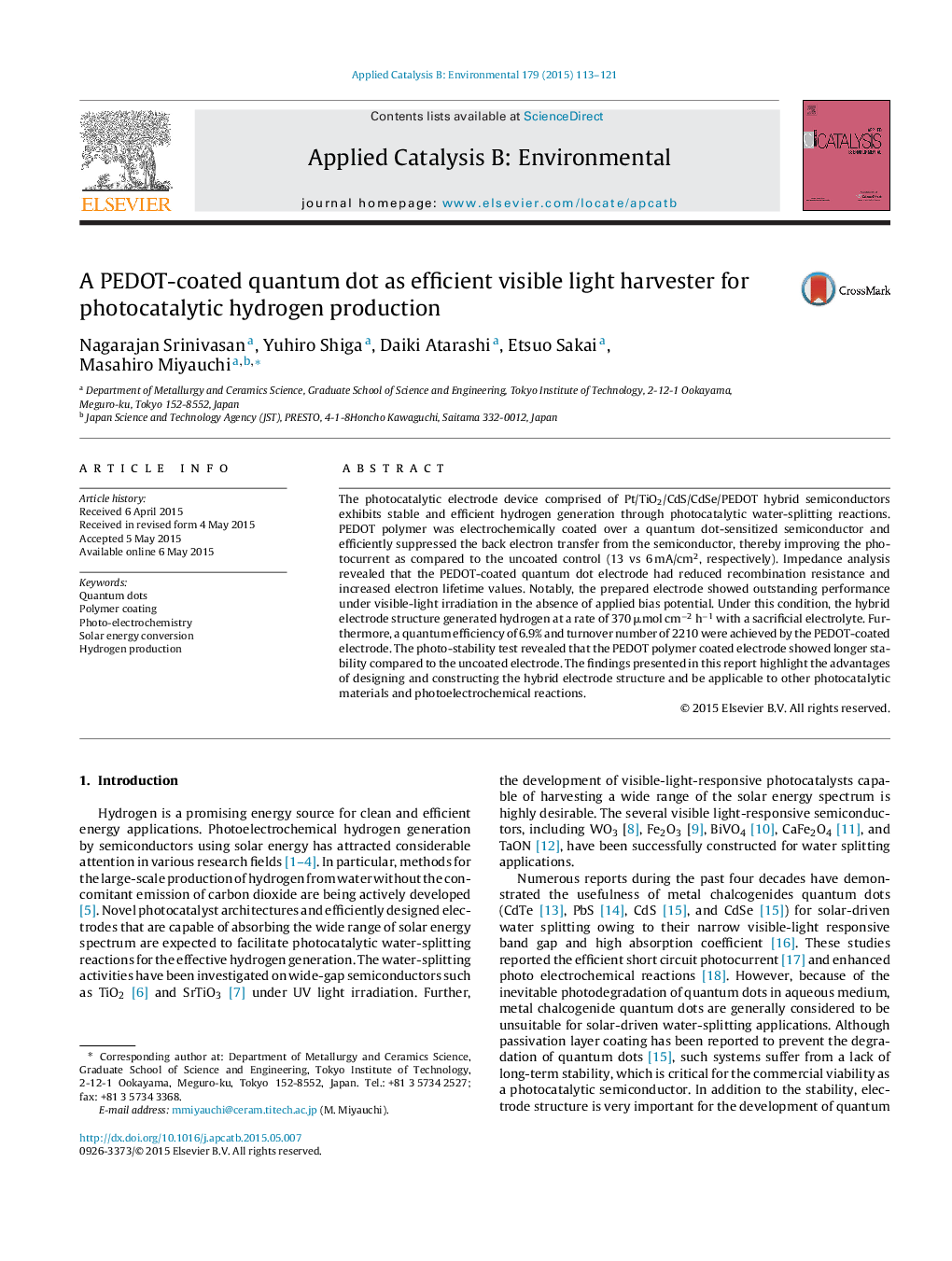| کد مقاله | کد نشریه | سال انتشار | مقاله انگلیسی | نسخه تمام متن |
|---|---|---|---|---|
| 45440 | 46412 | 2015 | 9 صفحه PDF | دانلود رایگان |

• PEDOT polymer was coated over a quantum dot-sensitized semiconductor electrode.
• PEDOT polymer coating improved photocurrent and increased electron lifetime.
• Robust Pt/TiO2/CdS/CdSe/PEDOT photocatalytic electrode was constructed.
• PEDOT-coated hybrid electrode generated hydrogen at a rate of 370 μmol cm−2 h−1.
• Quantum efficiency of 6.9% and turnover number of 2210 were achieved.
The photocatalytic electrode device comprised of Pt/TiO2/CdS/CdSe/PEDOT hybrid semiconductors exhibits stable and efficient hydrogen generation through photocatalytic water-splitting reactions. PEDOT polymer was electrochemically coated over a quantum dot-sensitized semiconductor and efficiently suppressed the back electron transfer from the semiconductor, thereby improving the photocurrent as compared to the uncoated control (13 vs 6 mA/cm2, respectively). Impedance analysis revealed that the PEDOT-coated quantum dot electrode had reduced recombination resistance and increased electron lifetime values. Notably, the prepared electrode showed outstanding performance under visible-light irradiation in the absence of applied bias potential. Under this condition, the hybrid electrode structure generated hydrogen at a rate of 370 μmol cm−2 h−1 with a sacrificial electrolyte. Furthermore, a quantum efficiency of 6.9% and turnover number of 2210 were achieved by the PEDOT-coated electrode. The photo-stability test revealed that the PEDOT polymer coated electrode showed longer stability compared to the uncoated electrode. The findings presented in this report highlight the advantages of designing and constructing the hybrid electrode structure and be applicable to other photocatalytic materials and photoelectrochemical reactions.
Figure optionsDownload as PowerPoint slide
Journal: Applied Catalysis B: Environmental - Volume 179, December 2015, Pages 113–121